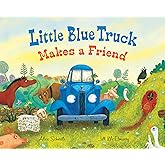In the ever-evolving world of design and materials, moulding mud has emerged as a versatile and innovative medium for artists, sculptors, and architects alike. Drawing inspiration from various sources, including nature and cultural motifs, the potential of moulding mud has been significantly enhanced by creative minds like Sebastian. This article delves into the innovative designs and applications of moulding mud, showcasing how they can transform spaces and engage audiences. Through various examples and case studies, we will explore the aesthetics, functionality, and sustainability of moulding mud designs.
The Magic of Moulding Mud

Moulding mud, often referred to as clay or sculpting mud, is a malleable material that can be shaped into various forms. Its versatility allows for a wide range of applications, from artistic sculptures to architectural elements. Inspired by the works of artists like Sebastian, moulding mud can be elevated beyond traditional uses to create stunning, functional, and environmentally conscious designs.
A Brief History of Moulding Mud

The use of moulding mud dates back thousands of years, with evidence of clay sculptures found in ancient civilizations. From the terracotta warriors of China to the intricate pottery of the Greeks, clay has been a fundamental component of human creativity. In contemporary times, artists like Sebastian have pushed the boundaries of this medium, using it not only for traditional crafting but also for modern architectural and design applications.
Innovative Moulding Mud Designs: Key Inspirations

Taking cues from nature, culture, and technology, innovative moulding mud designs can be categorized into several distinct themes:
- Nature-Inspired Designs: Artists often draw inspiration from organic forms, mimicking the textures and shapes found in nature.
- Cultural Motifs: Incorporating traditional patterns and symbols can add depth and meaning to moulding mud creations.
- Functional Art: Designs that serve a dual purpose—functionality and aesthetic appeal—are increasingly popular.
- Technological Integration: The integration of modern technology and sustainable practices can enhance the capabilities of moulding mud.
Case Studies of Moulding Mud Innovations

To better understand how these themes manifest in real-world applications, let us explore a few notable case studies.
1. Nature-Inspired Sculptures by Sebastian
Sebastian has been known for his captivating sculptures that draw heavily from natural forms. One of his most celebrated pieces, “The Tree of Life,” exemplifies this approach. Made entirely from moulding mud, the sculpture features intricate leaf patterns and textures that resemble bark. The use of earthy tones and organic shapes invites viewers to connect with nature, providing a sense of tranquility.
2. Cultural Motifs in Community Art Projects
In a community project in Mexico, local artists collaborated to create a mural using moulding mud that features traditional Aztec patterns. This project not only beautified the urban landscape but also served as a means of preserving cultural heritage. The vibrant colors and bold designs drew attention and sparked conversations about the significance of the motifs, demonstrating the power of moulding mud as a storytelling medium.
3. Functional Art: The Mud Furniture Revolution
In an innovative approach to interior design, a startup has begun producing furniture made from moulding mud. These pieces are not only visually striking but also environmentally friendly. The furniture is designed to be lightweight yet durable, making it suitable for both indoor and outdoor use. The textures and forms created by the moulding mud add a unique aesthetic, making each piece a conversation starter.
4. Technological Integration: 3D Printing with Moulding Mud
The advent of 3D printing technology has revolutionized the way moulding mud is used. Artists and designers are now able to create complex shapes that were previously impossible to achieve. By combining traditional moulding techniques with modern technology, new forms of artistic expression are being explored. For example, Sebastian’s recent project involved 3D printing moulding mud to create a series of intricate wall installations that play with light and shadow.
Advantages of Moulding Mud in Design

As designers and artists explore the potential of moulding mud, several advantages become evident:
- Sustainability: Moulding mud can be sourced locally and is biodegradable, making it an eco-friendly option for artists.
- Versatility: The malleability of moulding mud allows for a diverse range of creative applications.
- Cost-Effectiveness: Compared to other materials, moulding mud is often more affordable, making it accessible for emerging artists.
- Customizability: Artists can easily modify and personalize their designs, ensuring each piece is unique.
Challenges in Moulding Mud Design

While moulding mud offers numerous benefits, there are also challenges that artists and designers must navigate:
- Durability: Moulding mud pieces can be susceptible to damage if not properly treated or sealed.
- Drying Time: The drying process can be lengthy, which may delay project completion.
- Environmental Conditions: Factors such as humidity and temperature can affect the working properties of moulding mud.
Future Trends in Moulding Mud Design
As we look to the future, several trends are emerging in the world of moulding mud design:
- Eco-Conscious Practices: A growing awareness of environmental issues is leading artists to explore sustainable sourcing and practices.
- Collaborative Projects: Artists are increasingly collaborating with architects and designers to create multifaceted works that blend art and functionality.
- Interactive Installations: The integration of technology may lead to the development of interactive moulding mud installations that engage audiences in new ways.
Innovative moulding mud designs inspired by artists like Sebastian are reshaping the landscape of artistic expression and functional design. From nature-inspired sculptures to functional furniture, the versatility of moulding mud continues to captivate audiences and provide artists with a medium through which they can communicate and connect. As we move forward, the combination of traditional techniques and modern technology will likely open new doors for creativity, sustainability, and collaboration. By embracing the potential of moulding mud, artists can create meaningful works that resonate with people and the environment alike. The future of moulding mud design is bright, promising an exciting journey for both creators and admirers.




